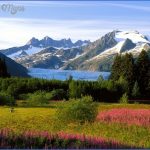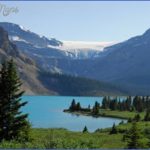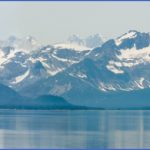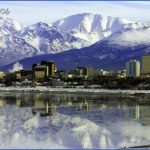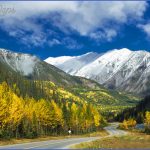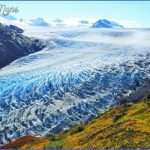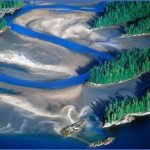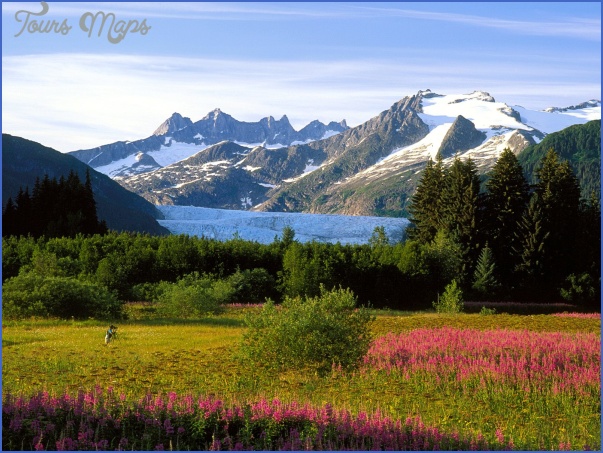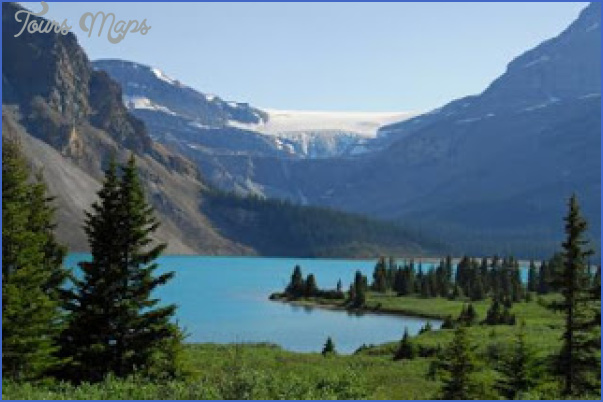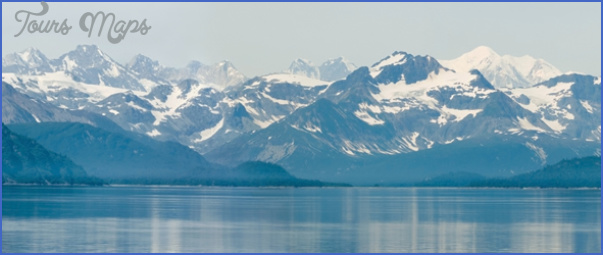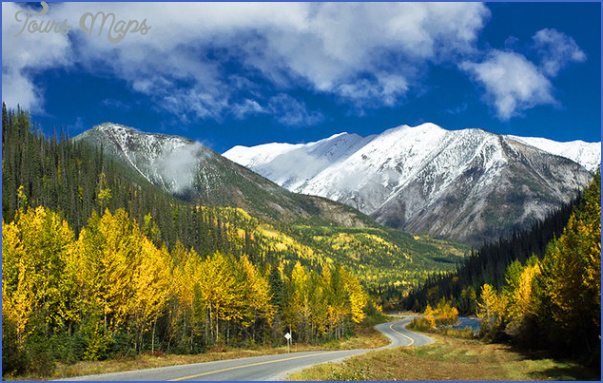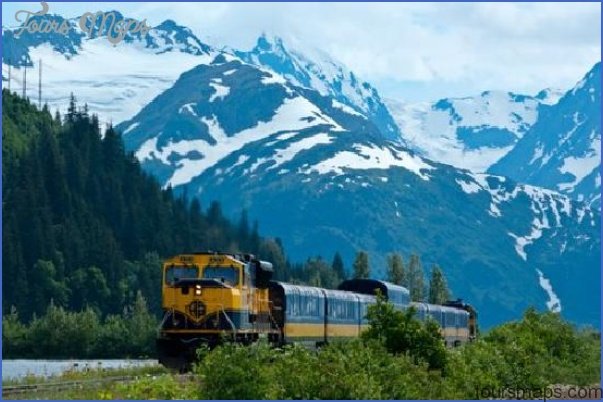With half of Alaska’s population, Anchorage is Alaska’s only real city. In this relatively sophisticated metropolis, a diner can find two truffled chocolates for S3 on the menu in at least one elegant restaurant. On Cook Inlet, the Japanese current spares it the severe winter weather of the interior. Anchorage has eighteen hotels/motels and 118 restaurants. Juneau, the state capital, is a town of nineteen thousand. Fairbanks, the trade and transportation center of the interior, has twenty-six thousand. Ketchikan and Sitka both have about eight thousand residents.
Of the several villages and towns served by the Alaska Marine Highway Sitka stands out. Picture-postcard beautiful, it is protected from the open sea behind a series of islands. Sitka presents a new face. During the past three decades fires have leveled much of the downtown area so that most of the buildings are new. This includes the simple little Russian Orthodox church, an architecturally balanced beauty. Sitka also has one of the more attractive climates in Alaska even though it receives ninety-four inches of rain a year. The most historically interesting of Alaskan towns, it was there that Russia had its capital of its American territory. On a hill in Sitka one of the greatest real estate coups in history took place when the U.S. purchased what is now Alaska for two cents an acre. Vestiges of Russian influence can be seen in the church, the bishop’s palace, and in the sprightly Russian dances performed for tourists.
The graphics of Alaskan tourism center on the totem pole, that expression of the wood-carver unique to the natives of the northwestern U.S., British Columbia and Alaska. Paris has its Eiffel Tower, London its Big Ben clock. Alaska has its totem poles. The totem pole takes on a character almost as pervasive in today’s tourist Alaska as was true in the native villages of the last century. They blazon tourist literature, enliven hotel lobbies and brochures and are prominently displayed in almost every museum.

